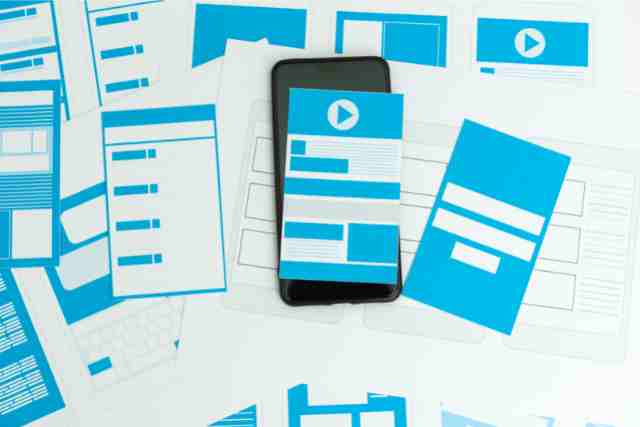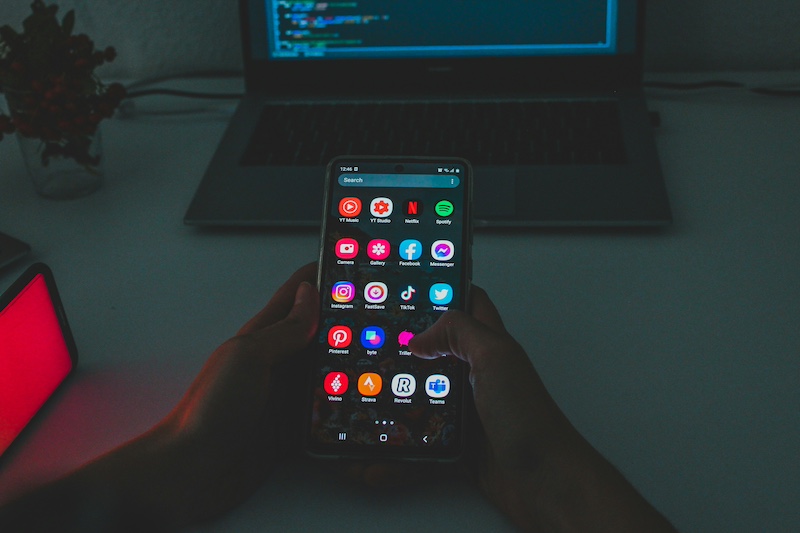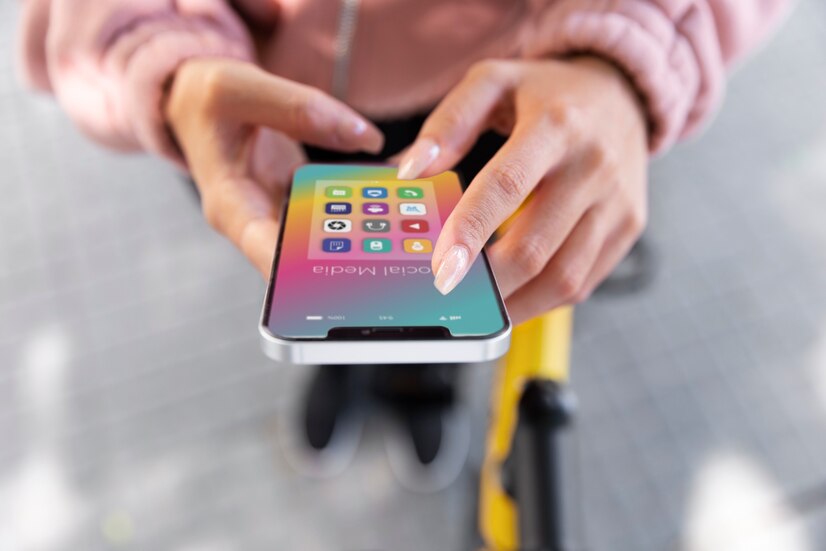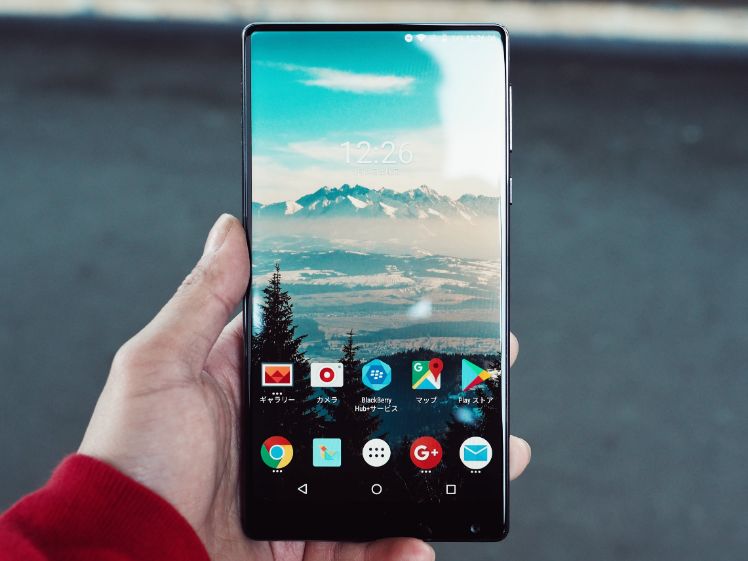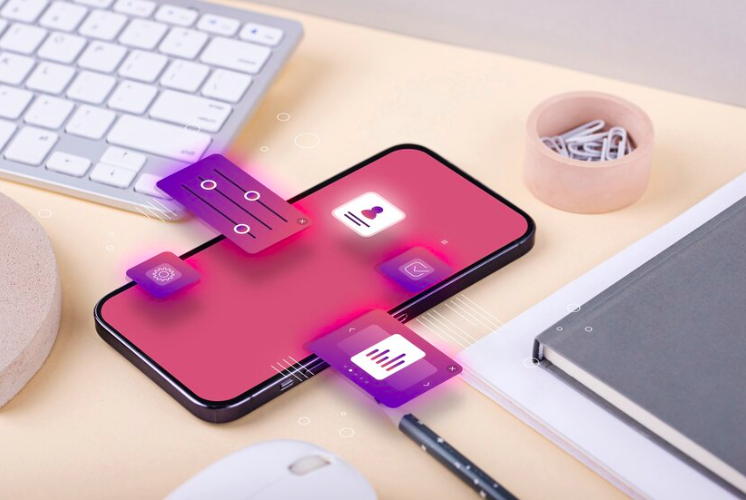It may seem that finding a mobile app programmer is just as quick and easy as snapping your fingers and that we’ll have our project developed in no time. But the truth is that mobile application development is not easy. If you have an app in mind, it’s better to learn the basics about the two predominant operating systems − Android and iOS − before you get down to work.
In this article we’ll be describing the technical basis for creating Android and iOS apps. We’ll be also discussing the peculiarities of each operating system and how these affect app developers working with them.

Source: Canva
Mobile application development for Android
We’ll start with the operating system that holds the largest market share and has the most mobile apps − both developed as in the stores. Let’s take a quick look at the features of this first OS: Android.
Basic features
According to Google − i.e. Android’s creator − the technical features that define and configure the aforementioned operating system are:
- It’s an open-source operating system. This means that you can adapt it to match your needs. It also means that there are plenty more developers and that there is much more documentation available for professionals.
- Its core is based on the Linux Kernel.
- It’s adaptable to many different resolutions and kinds of screens. Its ability to adapt to the endless number of different terminals on the market is excellent.
- It makes use of SQLite for data storage.
- It includes a web browser based on WebKit.
- It supports HTML, HTML5 and Adobe Flash Player, amongst others.
- It includes a device emulator and tools for memory debugging and software performance analysing.
- It also includes Google Talk for video calls in its Honeycomb version.
- It’s capable of genuinely multitasking between applications.
Mobile devices and terminals
Most of non-Apple smartphones and tablets run on any of the existing Android operating system versions, such as KitKat, Lollipop or Marshmallow − the most recent one. The most widely known devices that run on Android are:
- Nexus
- Samsung
- Sony
- Huawei
Tools required
The easiest and most direct way to get started with Android mobile application development is to download Android SDK and Eclipse IDE (see resources). Given its open-source nature, Android development can be carried out on computers running on Microsoft® Windows®, Mac OS X or Linux.
Android applications run in an object-oriented app Java framework on Java core libraries and in a Dalvik virtual machine with just-in-time compilation.
Libraries written in C include a graphical interface manager (surface manager), an OpenCore framework, a SQLite relational database, an API OpenGL ES 2.0 3D graphical programming interface, a WebKit rendering engine, a SGL graphics engine, SSL and a Bionic standard C library. However, there are other options available if you want to programme apps for Android without resorting to Java. These options have already been discussed in a previous article addressing how to programme apps without Java.
Android emulator: it’s highly recommended to have an Android emulator about if we develop mobile apps for this specific operating system. It will allow us to identify the possible errors that our app may have as well as the progress we are making in its development and debugging.
Cost sustained by the developer
We’ll consider the basic cost in the case of an Android developer who is just about to start working.
Android developer license: $ 25. This fee is paid only once in your lifetime.
Standard mobile device: Nexus 6 (€ 459, new and unlocked).
Computer for programming: € 300 on average. Although any computer works for this purpose.
Estimated total cost: € 869.
Mobile application development for iOS
This operating system is second only to Android and was created by Steve Jobs at Apple. Despite it was born before Android and had initially a much bigger market share that the latter, iOS has been gradually losing strength and users alike.
Basic features
The second OS in the race for the mobile market is still struggling to gain a foothold. Some facts about iOS, the mobile OS coming from the city of Cupertino:
- It’s a mobile operating system developed by the multinational company Apple Inc.
- It’s a variant of Mac OS X, which is the operating system developed for Apple computers. iOS − just the same as Mac OS X − is based on Unix.
- It’s not possible to install it in third-party hardware.
- Although it’s a private operating system and is exclusively designed for its Apple devices, the company has released its SDK so that it can be improved by developers.
- It’s capable of genuinely multitasking between applications.
- It’s necessary to jailbreak the device to install third-party applications.
iOS versions prior to version 8 don’t allow the use of Java Platform and Adobe Flash. iOS uses HTML5 instead as an alternative to Flash. On the other hand, the use of Adobe Flash is allowed from iOS 8 onwards, but users with an iPhone, iPod Touch or iPad with an iOS version prior to version 8 will not benefit from this update.
Mobile devices and terminals
Only Apple mobile devices can run iOS. Some of these devices are iPhone, iPad and several iPod versions:
- iPhone 4, 5, 6, etc.
- iPad, iPad Mini
- iPod nano, iPod shuffle
Tools required
The Software Development Kit (or SDK) is available to third parties and developers since March 2008, allowing developers to create applications for iPhone and iPod Touch, as well as testing them in the iPhone simulator. However, using the app in Apple’s devices is only possible after paying the iPhone Developer Program fee.
Xcode is the programme used in iPhone’s SDK. These applications − just as those for Mac OS X − are programmed in Objective-C.
Developers can establish the price that their applications will have in the App Store. The minimum price for an app is $ 0.99 and the developer will receive 70% of the money paid for the application. On the other hand, developers can launch their apps as free apps, in which case they would not obtain money from the App Store nor have to pay anything except the membership/developer fee.
Cost sustained by the developer
iOS developer license: € 99 per year.
Standard mobile device: iPhone (€ 639, new and unlocked).
Computer for programming: we’ll need a Mac computer; the lower range would be a Mac mini (€ 549, new).
Estimated total cost: an initial amount of € 1,287.
Ultimately, the final costs of mobile application development for Android and iOS are usually very similar from the standpoint of whoever commissions its development. Any possible variations will more likely reside in the excess or shortage of demand. The final price of Android apps can be more competitive, given the larger number of Android developers. Another aspect is that there will always be some Android developer that lowers the price a little while iOS development prices will always be more stable.
Well, thus far as to the technical basis needed to create an app.

